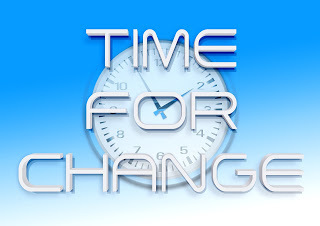Pearl Zhu's Blog, page 1359
March 6, 2016
Running Digital IT from Good to Great
 IT is doing good during the "glory years" when hardware was exploding, leverage and capitalize it was more specialized and centralized. Now with emergent lightweight digital technology and the trend of “software eating the world,” "IT" has been demystified and become more cost-efficient and transparent and is aggressively sought after and embraced by the business. It doesn’t mean the value proposition of IT has devolved, though, on the opposite, there is plenty of value to be put in the "I" side, there is a high expectation of running IT as a digital engine and business growth catalyzer. What are the most important perspectives to run IT from good to great?
IT is doing good during the "glory years" when hardware was exploding, leverage and capitalize it was more specialized and centralized. Now with emergent lightweight digital technology and the trend of “software eating the world,” "IT" has been demystified and become more cost-efficient and transparent and is aggressively sought after and embraced by the business. It doesn’t mean the value proposition of IT has devolved, though, on the opposite, there is plenty of value to be put in the "I" side, there is a high expectation of running IT as a digital engine and business growth catalyzer. What are the most important perspectives to run IT from good to great?
Business value clarification: Since IT is indeed becoming more and more as a business in most sectors. IT can not be seen as an enabler unless IT management clearly understands what their organization does for a living. It is important that the IT organizational leadership is involved setting the business strategy and goals of the company. While it is also essential to have IT represent their values as part of entire organization's objectives, it is, even more, important to have IT and non-IT organizations collaborate on creating the organization's vision, strategy, objectives, mission, plans. In order to demonstrate IT value, organizations need to first know wherein lies the IT value. If you understand that upfront by doing the right strategic questioning, you can later go back and ask if you achieved the value that had been set out to attain. 1) How does IT become strategic? and 2) How does IT deliver maximum value? Too often IT is not involved at a goal level but instead at a task level. This creates an environment where the IT folks focus less on the objective and more on the rules and processes that are defined for their department. So instead of working to find solutions they sometimes view their responsibility as to evaluate risks solely from a risk perspective. IT and the business need to work together in the planning process. This is becoming ever more important. More broadly speaking, IT is about distributing and sharing intelligence on the scale, and assisting to fulfill the business purpose and organizational needs uniformly, fairly and effectively. The CIO has to work with the senior executives to understand the business, the business drivers, long-term objectives, and strategy and then ensure that he/she is providing input to support these. This, in turn, will lead to the development of related IT strategies / initiatives. IT is not just part of the business; it is a critical, integral component of the business.
IT as a business capability builder: The focus of digital IT needs to provide business capabilities, not just services or solutions. The capability is the ability to achieve the desired effect under specified performance standards and conditions through combinations of ways and means to perform a set of activities. IT is not just the sum of services or processes, or monolithic hardware only, IT needs to build a set of value-added digital capabilities via weaving all necessary hard and soft elements, in reaching high-level maturity. Capability can "contain" many services, processes, and functionality in which IT as one of the most critical elements weaving them together and building up unique business competency. In any case, to monitor or seek disruptive opportunities requires the business’s transformational capability with agility to adapt to changes. Therefore, IT capabilities directly make an impact on business capabilities, and IT maturity is proportional to overall organizational maturity. For example, nowadays, change is no longer just a one-time business initiative, but an ongoing organizational capability to adapt to today’s digital dynamic and velocity. Change is happening all the time, the management just has to acknowledge and appreciate that. "Change" can be a somewhat mechanical implementation of new or different ways to doing something while the leapfrogging change like digital transformation. IT is always at the center of change, it’s also an important element in building the business’s change capability. IT is the only entity in the organization supposed to understand business entirely and oversight organizational processes horizontally, and pay attention to the change processes under the surface, in order to build change as a crucial business capability via platform approaches and systematic disciplines. Organization’s capabilities can be categorized into the competitive necessity and competitive uniqueness. IT is the crucial element in building both, and a great IT organization can differentiate its organization from the competitors via achieving the desired capability outcome.
 Prioritize to delight customers. It’s essential to run IT as a business with customer centricity. Every IT project is a business project to delight customers, engage employees and improve operational excellence. IT has two sets of customers as well, the internal users who count on IT to equip them with the effective technology tools to improve productivity and work satisfaction; and the end customers who shop the business’s products or service and continue to compare their customer experience with competitors.' At the age of people including both customers and employees, IT needs to set priority to digitalize every touch point of customer experience. So being customer-centric is a strategic objective and a digital trend, not just a performance indicator. A valid strategic objective and the strategy mapping allow you to first understand your customers (both internal users and end customers) and what they value, then identifies how to best characterize that value through project portfolio management, define key indicators, and then define those measures appropriate to best assess the performance of these indicators because they show you how well they satisfy or delight customers.
Prioritize to delight customers. It’s essential to run IT as a business with customer centricity. Every IT project is a business project to delight customers, engage employees and improve operational excellence. IT has two sets of customers as well, the internal users who count on IT to equip them with the effective technology tools to improve productivity and work satisfaction; and the end customers who shop the business’s products or service and continue to compare their customer experience with competitors.' At the age of people including both customers and employees, IT needs to set priority to digitalize every touch point of customer experience. So being customer-centric is a strategic objective and a digital trend, not just a performance indicator. A valid strategic objective and the strategy mapping allow you to first understand your customers (both internal users and end customers) and what they value, then identifies how to best characterize that value through project portfolio management, define key indicators, and then define those measures appropriate to best assess the performance of these indicators because they show you how well they satisfy or delight customers.
Running a digital IT from good to great starts from the transformational IT leadership via vision, strategy, communication and collaboration. It demands quality time spent with sales/marketing, operations, finance leaders and even end customers. The CIO has to foresee, anticipate business needs for information and then prepare and gear up the information systems to not only make readily pertinent information to top business decision makers but also preempt the need and present the value accordingly. IT needs to strike the right balance between building business competency for the long term and keeping the light on at the moment, and IT needs to shift from insight-out operation driven to outside-in customer centric.
Follow us at: @Pearl_Zhu
Published on March 06, 2016 22:59
March 5, 2016
The CIO’s Digital Agenda XXXXV: Running IT as a Change Agent
 IT Management is a strange animal, in that the capabilities are there, the data is there - but the motivations are often confused. Technology drives changes nowadays, but IT is often considered the function slower to change with “controlling mentality.” IT tends to measure itself against trivial things IT considers important but are often less important and impactful in the business lens. More importantly, how to deal with the management dilemmas in running IT as a Change Agent to catalyze the business grow and improve the overall organizational capabilities?
IT Management is a strange animal, in that the capabilities are there, the data is there - but the motivations are often confused. Technology drives changes nowadays, but IT is often considered the function slower to change with “controlling mentality.” IT tends to measure itself against trivial things IT considers important but are often less important and impactful in the business lens. More importantly, how to deal with the management dilemmas in running IT as a Change Agent to catalyze the business grow and improve the overall organizational capabilities? Running IT as a Change AgentHow IT Change Management Aims at Improving Customer Experience? Digital is the age of the customer, being a customer-centric business is in every forward-thinking organization’s agenda. Corporate IT plays a significant role in digitizing every touch point of customer experience and sharpening key business capabilities. IT implementations are core to strategic changes today. However, many IT organizations fail to reach customers’ expectation fully. Did it achieve the original objective? Did the customer experience actually improve significantly? And, how sustainable is the change or would it break down? Has the entire organization embraced it well? What are the IT change management principles & implementation best practices?
Five Aspect in Leading Change challenges: The speed of change is accelerated, organizations large or small spend significant time and resource to deal with the Big Changes such as radical digital transformation or small changes such as adopting a new software tool. However, statistically, more than 70% of change management effort fail to achieve the expected result, what are the critical elements in change management, and how to weave them more seamlessly to orchestrate a harmonized change symphony?
Change as an Ongoing Capability: Change is a volatile subject, just like change itself. Everything changes continuously by following the laws of evolution, and the rate of change is accelerated. Corporate change can be a simple modification of strategy, a business process improvement or a more radical digital transformation. Either at the individual or organizational level, at the more static industrial era, change is a one-time project; at digital age, change has to become an ongoing capability.
What does a Change Leaders/Managers actually Deliver? People change for a reason; they must have a reason to want to adopt the change. The question to be asked is why are you wanting the change? What do you expect to gain from adopting the change? That is where the change originator defines their deliverables and benefits, in real measurable, quantifiable terms. But what is “Change Management” and how can you define its value? What does a change leaders/managers actually deliver?
 The Cause and Effect of Silos: Silo is perhaps one of the most paradoxical symptoms in running business at the industrial era, on one side, most of the organizations are still operating in the functional base to improve efficiency; on the other side, the digital nature of hyperconnectivity and interdependence makes it inevitable to break down the silo, because more often than not, the silo thinking becomes the root cause of ineffective leadership; the silo team fragment the strategy, stagnate execution, motivate the unhealthy internal competition and cause more problems than benefits. More specifically, what’s the cause and effect of silos and silo thinking?
The Cause and Effect of Silos: Silo is perhaps one of the most paradoxical symptoms in running business at the industrial era, on one side, most of the organizations are still operating in the functional base to improve efficiency; on the other side, the digital nature of hyperconnectivity and interdependence makes it inevitable to break down the silo, because more often than not, the silo thinking becomes the root cause of ineffective leadership; the silo team fragment the strategy, stagnate execution, motivate the unhealthy internal competition and cause more problems than benefits. More specifically, what’s the cause and effect of silos and silo thinking?The “Future of CIO” Blog has reached 1.3 million page views with 2600+ blog posting in 59+ different categories of leadership, management, strategy, digitalization, change/talent, etc. The content richness is not for its own sake, but to convey the vision and share the wisdom. Blogging is not about writing, but about thinking; it’s not just about WHAT to say, but about WHY to say, and HOW to say it. It reflects the color and shade of your thought patterns, and it indicates the peaks and curves of your thinking waves. Unlike pure entertainment, quality and professional content takes time for digesting, contemplation and engaging, and therefore, it takes the time to attract the "hungry minds" and the "deep souls." It’s the journey to amplify your voice, deepen your digital footprints, and match your way for human progression.Follow us at: @Pearl_Zhu
Published on March 05, 2016 23:37
Boomers, X, Y, and Z Generations
 Many company workforce spans three or even four generations—Baby Boomers, Generation X, and Y (Millennials) and Z generation: each with different leadership, communication, working, and learning styles, and their mindsets are shaped by the environment in which they grew up, the historical events they experienced, the technologies they played with at the certain era, or the particular challenges they overcome. Hence, each generation is defined by a set of stereotypes, and in fact that different ages and worldviews learn differently and through different media and methods. So how can digital professionals belonging to different generations learn from each other to advocate the most advanced thinking, ideas, and viewpoint from a different perspective in order to leap their organizations, and fundamentally our society? How can are they working together harmoniously by respecting what each brings, ideally, works for the overall goals of the company as well as fulfill their own career goal and purpose?
Many company workforce spans three or even four generations—Baby Boomers, Generation X, and Y (Millennials) and Z generation: each with different leadership, communication, working, and learning styles, and their mindsets are shaped by the environment in which they grew up, the historical events they experienced, the technologies they played with at the certain era, or the particular challenges they overcome. Hence, each generation is defined by a set of stereotypes, and in fact that different ages and worldviews learn differently and through different media and methods. So how can digital professionals belonging to different generations learn from each other to advocate the most advanced thinking, ideas, and viewpoint from a different perspective in order to leap their organizations, and fundamentally our society? How can are they working together harmoniously by respecting what each brings, ideally, works for the overall goals of the company as well as fulfill their own career goal and purpose?
Baby boomers: Baby boomers were raised in hierarchical workplace environments where the flow of information was severely constrained and the business world were running with silo functional mentality, The world without internet was still isolated by physical barriers - the oceans, the mountains, the deserts, and the forests, even you can travel all other the world, but it’s difficult to have in-depth understanding of the world due to the scarcity of knowledge. This is the most influential generation in the last couple of decades, hence, they also play a crucial role in shifting their mind to digital mode, refresh their thinking and management styles, because they are the holders of institutional knowledge that can serve as the foundation for innovation. Finding how to keep them all motivated and on a mission is the biggest challenge, because how fast they can adapt to changes will directly impact the speed of the business transformation and the progress of the world.
X-Gen: X-Gen is like sandwich generation between baby-boomer and Y-Gen. And this is the “bridge” like generation which experienced both the internet bubble and bust, the tradition education style and the way of digital learning, they become more flexible and resilient to changes. Though it’s an underdog and less populated generation, it doesn’t mean X-Gen leadership will make less impact, as a matter of fact, from the industry surveys, X-Gens have highest intention to make a difference in their organizations than any other generations. Gen Xers, who already hold some leadership positions and are staking out territory for more.
Y-Gen (millennials) & Z-Gen: Millennials will surpass baby boomers as the largest segment of U.S. employees. As digital natives, both Y-Gen and Z-Gen are generations that are concerned about flexibility and social media, so trying to find ways to keep them engaged while offering employment programs that will allow them to learn new things. Due to the abundance of information and knowledge and the latest gadgets and learning tools, this generation is absolutely more open-minded, informative, and fluent in digital dialects and conversations. With the right guidelines, these generations can truly make the world hyperconnected and innovative.
 Getting different generations to work together is part of team building. This is important to any enterprise because their clients and customers will also come from diverse age groups. Different generation groups don't all want the same thing. People's attitudes towards life, people, work, etc., are all influenced by what era they grew up in. Generations grow up with different beliefs and perspectives. The conditions of the economy, the state of the world, technology, and social trends all impact the overall behavior of the generation. So the main theme in business now is collaboration to build a cohesive “C” generation. Knowledge and experience from different perspectives are powerful if utilized in the right manner. All generations need to realize they can learn from each other, instead of assuming they each know everything they need to know to run a successful business. At the dawn of digital era, global businesses need to shed the tendency to bridge the generational differences and shape the cross-generational mindset with common digital traits and perceive a more complex and complete picture of their workforce
Getting different generations to work together is part of team building. This is important to any enterprise because their clients and customers will also come from diverse age groups. Different generation groups don't all want the same thing. People's attitudes towards life, people, work, etc., are all influenced by what era they grew up in. Generations grow up with different beliefs and perspectives. The conditions of the economy, the state of the world, technology, and social trends all impact the overall behavior of the generation. So the main theme in business now is collaboration to build a cohesive “C” generation. Knowledge and experience from different perspectives are powerful if utilized in the right manner. All generations need to realize they can learn from each other, instead of assuming they each know everything they need to know to run a successful business. At the dawn of digital era, global businesses need to shed the tendency to bridge the generational differences and shape the cross-generational mindset with common digital traits and perceive a more complex and complete picture of their workforceFollow us at: @Pearl_Zhu
Published on March 05, 2016 23:34
How to Build a Real Agile Organization
 Many organizations are doing Agile - applying Agile methodologies and practices to develop software, but very few organizations are being agile - following Agile principles and philosophy to run an agile organization. An agile organization is one that is open to change and can adapt readily when change is needed. Agile is a mindset which drives strategic and tactical decisions to achieve goals with a set agile guidelines, what characteristics determine whether organizations are truly agile or just calling themselves agile? is there any way to measure “agility” of an organization, and how to build a real Agile organization?
Many organizations are doing Agile - applying Agile methodologies and practices to develop software, but very few organizations are being agile - following Agile principles and philosophy to run an agile organization. An agile organization is one that is open to change and can adapt readily when change is needed. Agile is a mindset which drives strategic and tactical decisions to achieve goals with a set agile guidelines, what characteristics determine whether organizations are truly agile or just calling themselves agile? is there any way to measure “agility” of an organization, and how to build a real Agile organization?
Spot some indicators to assess whether the organization is on the journey of agileness or not: For example: Are teams are free to choose how they want to organize themselves? Are sponsors are open to failures at team/project/program/strategy levels? Do middle-level managers act as process police or guidelines provider? These indicators depend upon an organization’s business domain, organizational structure, existing culture, organizational vision, and a lot more factors. Most of them are practicing Agile but very few are actually Agile. To assess an organization’s agility, specifically looking for aspects of collaboration, knowledge sharing, and trust amongst other things, that relate to, but would not be a complete sampling of, organizational health and culture attributes.
An agile organization is one that is open to change and can adapt readily when change is needed: The defining characteristic of being agile is that it can adapt readily when change is needed. There are key properties of an adequate "Safety Net" - 1) you need to know what it means to be on course. 2) you need to be able to detect when you have gone off course (or the course has changed or needs to be changed). 3) You need to be able to get back on course, in a timely manner. Agility is the ability to respond to changes, to change direction. It is not a goal in itself but needed for navigating impediments and moving targets.
Agility is a function of organizational culture, more than organizational practices: "Rituals and routines" (practices) are just one part of the cultural web. Different interpretations (some may be to suit some selfish motives) are laying the path for evolution. If the customer is involved as a partner, team spirit exists as the best way for people to work, success is measured by delivering a working product, and change is accepted, the org is on the right path to agility. To quantify how much agile the organization is involves analysis of their attitudes and level of adoption about changes and innovation. An organization which can give up command and control to adapt a culture of learning and innovation via flatter structure and removing barriers of communication is on the right track to be an agile organization. Respect to people, creating an open and transparent environment for teams to work, nurture, grow and mature are also key.
A well-crafted strategy is important to shift from doing agile to being agile: Strategy must be there either you adopt some best practices or make one for you and also strategy must be evolving with the team experience. If you don't have any strategy at all then there will be “chaotic,” or get stagnate when you shift from doing agile to being agile. Because traditional industries that have started their Agile journey in last few years are the pragmatist. Early adopters of Moore's model who expects quick solutions and easy transition. And they generally fall into the pitfall of ‘entrained thinking.’ Because of that, they take Agile based framework such as Scrum, use that as a ‘process’ rather as a ‘culture; and get satisfy for ‘doing’ Agile, without a thought out strategy, it is hard to jump to the next level of being truly agile.
 Measure the outcome or delivered business value to decide how agile the business is: First organizations need to transform into an agile mindset which leads to Agile behaviors, and such as much as you can measure behavior then attempts to do so may provide you with some type of metric that provides insight into the desired outcome when moving to Agile. Organizational leadership is responsible for deciding whether an agile approach is suitable and organizational leadership is accountable when the results fall short. The business capability gap analysis will lead to initiatives to buy, build, enhance, sunset, or retire systems and processes. Those initiatives will be prioritized and made into projects that are road mapped for project execution, and then the organizational leaders/managers can scale up agile practices to the organizational scope. In this endeavor, you would want to inject certain Agile principles in some systematic way.
Measure the outcome or delivered business value to decide how agile the business is: First organizations need to transform into an agile mindset which leads to Agile behaviors, and such as much as you can measure behavior then attempts to do so may provide you with some type of metric that provides insight into the desired outcome when moving to Agile. Organizational leadership is responsible for deciding whether an agile approach is suitable and organizational leadership is accountable when the results fall short. The business capability gap analysis will lead to initiatives to buy, build, enhance, sunset, or retire systems and processes. Those initiatives will be prioritized and made into projects that are road mapped for project execution, and then the organizational leaders/managers can scale up agile practices to the organizational scope. In this endeavor, you would want to inject certain Agile principles in some systematic way.
Agile success can improve the entire business competencies because they can do things quicker and better, and encourage improvement and innovation. The challenge and direction now are to bring agility, holistically to the entire business. It is the mind shift and culture evolution. It's a journey for any company looking to digital transformation radically.
Follow us at: @Pearl_Zhu
Published on March 05, 2016 23:28
March 4, 2016
Three Perspectives to Bridge the “Trust Gaps”
 Digital workforce in organizations today are multigenerational, multicultural, multidevicing, on one hand, the business becomes hyperconnected and always on; on the other hand, every person is different, every generation is different, and every region in the multinational company is also different, from talent management perspective, besides “skills gap” the organization need to close; filling the trust gap is perhaps another challenging facing in businesses and our society.
Digital workforce in organizations today are multigenerational, multicultural, multidevicing, on one hand, the business becomes hyperconnected and always on; on the other hand, every person is different, every generation is different, and every region in the multinational company is also different, from talent management perspective, besides “skills gap” the organization need to close; filling the trust gap is perhaps another challenging facing in businesses and our society.
Respect: Trust starts with respecting. Mutual trust is that linchpin without which leadership is hollow and ineffective. The more we understand its vitality and the anatomy, the better will be our ability to lead in different situations. There are so many things employees will not tell their managers what's in their mind, and unfortunately, there are not so many things that are positives. It is an indication of a lack of trust. People may have different value systems for trust, leading in such an environment requires acting in ways that provide clear reasons to decide to trust. No blind trust or trust too little. Leader need show staff that you respect them, first, understand what they care, trust them in a safe environment. Help them not to fail, and if they do, show yourself to be trustworthy by supporting them. That will motivate them more than just throwing out some platitudes about trust as the opposite of micro-managing. Why does building trust matter? Because otherwise you will not have an engaged or productive staff.
Empathy: Trust is not straightforward, but multifaceted. The more deeply the leaders/managers understand their employees, what're their value, priority, the way to think and do things, the lens to see the world & work and what they see; the more effective leadership would be. Empathy is about thinking as if you were in the other party's position. Empathy is a great leadership quality that's often overlooked. Showing empathy helps a great leader infuse their employees with the company's mission and even better, their own life purpose or career goals. Trust via empathy also means to embrace divergent thought, respect the difference, then converge them into fresh ideas to harness innovation. The great leadership is not based on fear or command control, but through empathy and inspiration. Fear only creates order in the short term: One thing that is true, fear and anger operate on the lowest level and can do little more than create order in the short term. When leaders realize that if you want to achieve greatness in your realm, you will have to touch the upper levels, thus eliminating fear and anger as options. Once you realize that you have to find other options, you begin to investigate the real motivators like passion and trust.
 Authentic communication: Communication is the very way to build trust, and lack of trust is an often overlooked barrier to communication as well. Hence, communication effectiveness is often dependent on “how much trust” between different parties. The reality of messages is that they have to be "real." Most of the organizations today are process and control driven. Emphasis is on compliance with the result people forget to think freely. Words and techniques won't matter if the relationship between the giver and sender has been damaged. Leaders, or those who are sending the message, must have integrity, openness, and insight. And authentic communication is a two-way street. Transparency is a fundamental attribute that a leader should have. Telling your team exactly what you think of them, will not only garner the trust but also strengthen your leadership as people begin to trust you as a person and thus will respect you more as a leader.
Authentic communication: Communication is the very way to build trust, and lack of trust is an often overlooked barrier to communication as well. Hence, communication effectiveness is often dependent on “how much trust” between different parties. The reality of messages is that they have to be "real." Most of the organizations today are process and control driven. Emphasis is on compliance with the result people forget to think freely. Words and techniques won't matter if the relationship between the giver and sender has been damaged. Leaders, or those who are sending the message, must have integrity, openness, and insight. And authentic communication is a two-way street. Transparency is a fundamental attribute that a leader should have. Telling your team exactly what you think of them, will not only garner the trust but also strengthen your leadership as people begin to trust you as a person and thus will respect you more as a leader.
The key to trust is to establish trustworthiness as a character trait. Trust is vital for the betterment of the human existence and providing a competitive advantage for business. The true trust is multidimensional. It encompasses trusting self, trusting others, and earning the trust of others. All of these three dimensions are vital to building/nurture/repair mutual trust. Building trust is ongoing and never ending endeavor. Building/nurturing mutual trust is not an overnight phenomenon, but starting with a trustful mind with a constant commitment to consistent actions.
Follow us at: @Pearl_Zhu
Published on March 04, 2016 23:01
Running IT as a Business Optimizer
 IT is the spinal cord for the organization, integrating various functional capabilities to bring out technology enabled business solutions, motivating the IT team to constantly deliver multidimensional IT values. So how to run IT as a business optimizer for improving business efficiency, enhancing innovation, harness agility, build resilience, and ultimately achieve high-performing business expectation?
IT is the spinal cord for the organization, integrating various functional capabilities to bring out technology enabled business solutions, motivating the IT team to constantly deliver multidimensional IT values. So how to run IT as a business optimizer for improving business efficiency, enhancing innovation, harness agility, build resilience, and ultimately achieve high-performing business expectation?
Simplification: In a corporate world, you will find the attitude of complicating things in systems and procedures and people love to hang on to the complications and express how they are experts in dealing with complications. Overcoming complication and managing complexity becomes one of the biggest challenges in business today. Every IT initiative is to solve business problems, not a purely technical challenge. Many IT organizations still run as a silo function and back office to “keep the business light on,” and running IT project as technical challenge only, the focus always remains on technicalities of implementation and preparedness of business / user community gets forced to focus only at the end. So this one important aspect to engage customers and users earlier on is missed or overlooked majority of the time. Remember constantly that the tool and automation are not the goal - the operating model, structure, process, automation, and tools are all means to something else. If you forget this your requirement set will be sub-optimal. It’s important to leverage Systems Thinking in IT management. Systems Thinking is not a methodology, it is underpinned by several fundamental concepts. Holism is just one. Systems Thinking allows you to see the whole, in terms of its inner processes, its interactions with external systems, its components, the specific interactions amongst them, etc. From optimization lens, it’s important to follow simplification principles to build “as little as possible,” but maximize outcome. Avoiding waste is better than eliminating waste. Eliminating waste is about eliminating something which is not used and saving effort on maintaining it. Avoiding waste is more about not building non value adding features. There are always constraints, so simplicity implies to build as little as possible (as little output as possible, to maximize the amount of work not done) and maximize outcome (benefit for users/customers).
Agility: Agility is the ability to "pivot" and change direction in response to market pressure, or to create market opportunity, it is a measure of ability to recognize, act and benefit from changing business circumstances. It requires distinct patterns of IT capabilities, with specific positioning in the enterprise and unit level. From business optimization perspective, getting the right mix is not easy. It requires a good understanding of what is meant by strategic agility, to avoid over-investing in a given layer of the technology stack. So keeping an eye on where IT initiatives cluster on the value-net would be a first measure of whether IT dollars line up with strategic direction. From agile perspective, it is imperative that IT leaders embrace agile philosophy and development methodologies, to run IT as a software startup, from doing agile to being agile. The CIO’s agile way includes quick iteration, continuous improvement, and regular delivery, as it’s the most effective way to remove risk and deliver quality software. It takes practice, discipline, and a mind shift, but it’s worth the effort.
 Resilience: The business environment is volatile and uncertain; the “VUCA” characteristics of Digital bring both abundance of opportunities and unprecedented risks to the organizations today, being resilience means that the business can identify and manage risks with intelligence, it can also recover from “setback” more effortlessly. From business optimization lenses, it’s important to manage the risks, but identify some opportunities as well. Many of the opportunities are in the blind spots. When you are not looking at your blind spots, someone comes in and disrupt you over time. In business every day is a risk, and more than 80% of today's business value is based on their ability to embrace uncertainty, understand the future, opportunities, decide which one to go after and which one they will not go after and clearly articulate forward the way value will be created. Therefore, IT plays a critical role in managing the information system of the organization to capture the business insight and foresight, and optimize the set of business capabilities for building resilience and leap organizational maturity.
Resilience: The business environment is volatile and uncertain; the “VUCA” characteristics of Digital bring both abundance of opportunities and unprecedented risks to the organizations today, being resilience means that the business can identify and manage risks with intelligence, it can also recover from “setback” more effortlessly. From business optimization lenses, it’s important to manage the risks, but identify some opportunities as well. Many of the opportunities are in the blind spots. When you are not looking at your blind spots, someone comes in and disrupt you over time. In business every day is a risk, and more than 80% of today's business value is based on their ability to embrace uncertainty, understand the future, opportunities, decide which one to go after and which one they will not go after and clearly articulate forward the way value will be created. Therefore, IT plays a critical role in managing the information system of the organization to capture the business insight and foresight, and optimize the set of business capabilities for building resilience and leap organizational maturity.The Role of IT today for many organizations is Solutionary for business problems, optimizer for business processes and capabilities, and orchestrator for the digital transformation. The real goal of IT is to achieve business expectations. Business is no more interested in IT, if it continually delivers technology projects without delivering business value. The role of IT in the current business environment should be able to enable business outcomes, build business competency, and catalyze business growth.
Follow us at: @Pearl_Zhu
Published on March 04, 2016 22:56
March 3, 2016
The Weekly Insight of the “Future of CIO” 3/3/2016
 The “Future of CIO” Blog has reached 1.3 million page views with 2600+ blog posting in 59+ different categories of leadership, management, strategy, digitalization, change/talent, etc. The content richness is not for its own sake, but to convey the vision and share the wisdom. Here is the weekly insight about digital leadership, IT Management and Talent Management.
The “Future of CIO” Blog has reached 1.3 million page views with 2600+ blog posting in 59+ different categories of leadership, management, strategy, digitalization, change/talent, etc. The content richness is not for its own sake, but to convey the vision and share the wisdom. Here is the weekly insight about digital leadership, IT Management and Talent Management.
The Weekly Insight of the “Future of CIO” 3/3/2016Running IT as the Digital “Whole Brain” of the Organization: Organizations large or small on the journey to digital transformation, IT plays a critical role as a "digital brain" of the organization to process information, drive changes and build a high-effective and high-intelligent digital organization. Because IT is the steward to manage business information, it is like the business’s nervous system to ensure the right information getting to the right people at the right time to make the right decisions. IT also helps the business to optimize processes, cost and capture the business insight for growth opportunities. But is digital IT more like the LEFT brain, RIGHT brain or the WHOLE brain of the organization?
CIOs as Talent Master: Three Aspects to Retool Talent Management: People are always the most important asset of the organization.The digital dynamic continues to evolve with increasing speed of change and rapid integration of the business across the globe. Talent Management is throwing fresh challenges and calls for radical change to be embraced. Talent Management has adapted to the changing workforce in the changing workplace and added additional best of breed talent and engagement systems to their existing core.
Running IT as a Niche Player: Digital provides significant opportunities for business growth and innovation, and IT plays a significant role in digital transformation. That means IT has to reinvent its brand from a cost center to a value creator; from an order taker to an idea shaker, and from a commodity service provider to an innovation engine and digital whole brain. But more specifically, what are perspectives to run IT as a niche player?
Three Things Differentiate Digital Masters from Laggards: Digital transformation is a journey. Although digitalization is on every forward-looking organization’s agenda, they may take different levels of altitude, attitude, and aptitude to achieve it. There are three levels of digital maturity, the level one- digital laggards often take a skeptical attitude about the radical change, have very limited advanced digital capability, and pretty much still running with structured silos at the industrial speed. The level 2 -digital mediocrity takes a conservative mindset or attitude to move with digital speed. And the level 3 - digital masters (less than 15%) of overall businesses are digital forerunners who are courageous to be in the vanguard of digital transformation with a quantum lead, they also develop the set of advanced and unique digital capabilities and build a digital premium into the very foundation of the business. More specifically, what are important things differentiate digital masters from digital laggards?
 Leaping Digital Leadership at Leap Day: The substance of leadership never changes, it’s all about future and change, innovation and progression. Either past, today or future, there's no magic formula for leadership effectiveness, because every era has its own opportunities and risks. It is the leap day today, but what're the emergent digital leadership trend, and how to leap digital leadership to achieve the next level of leadership maturity in the leap year and beyond?
Leaping Digital Leadership at Leap Day: The substance of leadership never changes, it’s all about future and change, innovation and progression. Either past, today or future, there's no magic formula for leadership effectiveness, because every era has its own opportunities and risks. It is the leap day today, but what're the emergent digital leadership trend, and how to leap digital leadership to achieve the next level of leadership maturity in the leap year and beyond?Blogging is not about writing, but about thinking and innovating the new ideas; it’s not just about WHAT to say, but about WHY to say, and HOW to say it. It reflects the color and shade of your thought patterns, and it indicates the peaks and curves of your thinking waves. Unlike pure entertainment, quality and professional content takes time for digesting, contemplation and engaging, and therefore, it takes time to attract the "hungry minds" and the "deep souls." It’s the journey to amplify diverse voices and deepen digital footprints, and it's the way to harness your innovative spirit.Follow us at: @Pearl_Zhu
Published on March 03, 2016 23:05
Three Questions to Assess a Person’s Intuition
 The word intuition comes from Latin verb “intueri” which is usually translated as to look inside or to contemplate. Intuition is thus often conceived as a kind of inner perception, the gut feeling, sometimes regarded as lucidity or understanding. Digital professionals have to leverage both their intuition skills and analytics ability to make either business or personal decisions every day, from talent management perspective, how to evaluate a person’s intuition or “gut feeling” ?
The word intuition comes from Latin verb “intueri” which is usually translated as to look inside or to contemplate. Intuition is thus often conceived as a kind of inner perception, the gut feeling, sometimes regarded as lucidity or understanding. Digital professionals have to leverage both their intuition skills and analytics ability to make either business or personal decisions every day, from talent management perspective, how to evaluate a person’s intuition or “gut feeling” ?How much shall you trust your “gut feeling”? Intuition is also called gut-feeling; intuition or being intuitive is when you have a gut feeling about something. Jung's definition of intuition is a reference to intuition as one of the functions of the psyche related to ego-personality. He distinguished also between passive and active intuition. Intuition is a complex concept and perhaps it is impossible to make a single definition that applies to all kinds of situations in which intuition is involved. It is when there isn’t an exact answer to the puzzle because you don’t have all the pieces. Chaos needs to be navigated by intuition, but the Master Creator knows how to put things together; solutions continue to beget new problems. Intuition is the perception of inside images etc., because it seems to have got to do something with the gut. In many of the ancient religions, there is such concept of the fourth brain. It says that the brain not only sits in the head, but there is one part at the solar plexus. That's where intuitions come. Our conscious ego is a small part of the human psyche. Most of the psyche consists of the collective unconsciousness and it is from which that creativity stems.
Do you make choices via intuition or deliberate thinking? Is it just our belief in an intuition which finally influences our mind to go by the Intuition? Or is there a concrete evidence to prove that intuition is all about what is destined for us? Intuition is not just the emotional side of the mind; sometimes it’s an inner calling. One has to be too deeply inclined, and sensitive, to listen to this subtlest sound of silence. As human beings, we normally go by the belief in it and hence we may not get into an investigative mood about the outcome of following our intuition. We may tend just to accept whatever happens and be happy with it. Also, Intuition does not mean one stops making conscious choices totally. Conscious choice is when we apply our mind and "make a decision." This could be based on our intelligence, past experiences. Intuition matters, but pay more attention to the unconscious bias. The problem with intuitive decision-making though is that it can seldom be quantified and so analyzed.
 What’s your personal way to assess your “intuition mode”? People have different ways of accessing their intuition and “knowing” when they have made a good decision. On a personal level, there may be a number of factors involved, possibly just outside of your awareness, that let you know when a decision is right for you. Intuition is one element for our unconscious process which is created out of our distilled experiences; it is often used when there is a high level of uncertainty. Meaning, there is little precedent to go on, when the ‘risks‘ are less predictable and when “facts” are limited. What might be identified as "intuition" is probably subconscious rapid assessment through a decision tree to come up with an appropriate and timely response to an unfolding situation. That is the ideal outcome for training certain professions with an "automatic" (intuitive) appearing reaction. Intuition is a “Thinking Faster” mentality, often it needs some kind of catalyst - we need to be provoked to make our intuition work, sometimes it is an thought-provoking question, other times it is a triggered event.
What’s your personal way to assess your “intuition mode”? People have different ways of accessing their intuition and “knowing” when they have made a good decision. On a personal level, there may be a number of factors involved, possibly just outside of your awareness, that let you know when a decision is right for you. Intuition is one element for our unconscious process which is created out of our distilled experiences; it is often used when there is a high level of uncertainty. Meaning, there is little precedent to go on, when the ‘risks‘ are less predictable and when “facts” are limited. What might be identified as "intuition" is probably subconscious rapid assessment through a decision tree to come up with an appropriate and timely response to an unfolding situation. That is the ideal outcome for training certain professions with an "automatic" (intuitive) appearing reaction. Intuition is a “Thinking Faster” mentality, often it needs some kind of catalyst - we need to be provoked to make our intuition work, sometimes it is an thought-provoking question, other times it is a triggered event. An intuitive mind has the strength and the willpower to follow the courageous heart, and thus, having the better chance to be creative. Then you are courageous enough to follow the gut, and curious enough to understand the surroundings, and you learn how to liberate the imagination and come up with a new approach to the world. Intuition is a deeper sense, should be taken as a new insight, a new idea, and a new angle.Follow us at: @Pearl_Zhu
Published on March 03, 2016 23:02
The Digital CIO’s Hard Core Leadership Competency
 Often the management gurus put a lot of emphasis on the soft skills of leaders, such as listening, communication, facilitation, etc. it is indeed critical, however, for top level leaders such as CIOs, the hard core knowledge and competency is crucial as well to make profound leadership influence and improve management effectiveness. As a leader, the CIO has to be able to inspire and encourage with his/her vision and generate conviction and enthusiasm for the missions of the company and the IT division, regardless of how exciting or mundane they may be. As a manager, the CIO also need be able to manage day-to-day tactical issues. The ability to keep the bottom line while increasing efficiencies, championing new and "business relevant" technology, and providing "convincing" management discipline. More specifically, what are the hard core leadership competency of a digital CIO? The technological vision and strategic insight: IT is the steward of the business’s information system, and CIOs need to be the information master who can convey technological vision and in depth business insight, neither vision nor insight are delusion or mirage, these are views you can foresee, and many others can not. It’s an intimate understanding of the business, inspires teams to clearly see the picture of a better tomorrow, and communicating that vision in a way in which the picture becomes clear to those who can provide direction, funding or permission to execute the vision for the benefit of the organization. And they are all based on the hard-core knowledge and profound thinking skills. The CIO has to be the technical visionary of the company, so she/he has to be able to not only articulate the vision, but communicate it in various forms and forums, including investor relations, business partners, business leaders, IT personnel, the other CxOs in the company, etc. so the CIO has to be flexible, adaptable, and able to adjust the lingo to suit the audience, sometimes soften it up and drop the technical jargon, other times diving into the bits and bytes level. As a business strategist, the CIO need to understand their environment and playing field to develop a plan to harness the opportunities you identified. When the CIO is in charge of a forward-looking organization that needs/expects a lot from technology, the style of the CIO needs to be more of a strategic partner/vision designer. He/she needs to be a trusted partner to the business areas who has the business acumen (the hard core knowledge) and communicates (the soft skills) well with others.
Often the management gurus put a lot of emphasis on the soft skills of leaders, such as listening, communication, facilitation, etc. it is indeed critical, however, for top level leaders such as CIOs, the hard core knowledge and competency is crucial as well to make profound leadership influence and improve management effectiveness. As a leader, the CIO has to be able to inspire and encourage with his/her vision and generate conviction and enthusiasm for the missions of the company and the IT division, regardless of how exciting or mundane they may be. As a manager, the CIO also need be able to manage day-to-day tactical issues. The ability to keep the bottom line while increasing efficiencies, championing new and "business relevant" technology, and providing "convincing" management discipline. More specifically, what are the hard core leadership competency of a digital CIO? The technological vision and strategic insight: IT is the steward of the business’s information system, and CIOs need to be the information master who can convey technological vision and in depth business insight, neither vision nor insight are delusion or mirage, these are views you can foresee, and many others can not. It’s an intimate understanding of the business, inspires teams to clearly see the picture of a better tomorrow, and communicating that vision in a way in which the picture becomes clear to those who can provide direction, funding or permission to execute the vision for the benefit of the organization. And they are all based on the hard-core knowledge and profound thinking skills. The CIO has to be the technical visionary of the company, so she/he has to be able to not only articulate the vision, but communicate it in various forms and forums, including investor relations, business partners, business leaders, IT personnel, the other CxOs in the company, etc. so the CIO has to be flexible, adaptable, and able to adjust the lingo to suit the audience, sometimes soften it up and drop the technical jargon, other times diving into the bits and bytes level. As a business strategist, the CIO need to understand their environment and playing field to develop a plan to harness the opportunities you identified. When the CIO is in charge of a forward-looking organization that needs/expects a lot from technology, the style of the CIO needs to be more of a strategic partner/vision designer. He/she needs to be a trusted partner to the business areas who has the business acumen (the hard core knowledge) and communicates (the soft skills) well with others.
Multidisciplinary knowledge and “multi-dialect fluency”: CIOs need to build hard core expertise and develop skills beyond technology, based on the understanding of their particular organization's current and potential corporate structure, senior management style, and strategic plan. CIOs need to develop a broad skillset beyond technology. Coupled with the ability to understand, translate and speak “tech-talk.” Among other skills, they need strong business orientation and a proven ability to bring the benefits of IT to solve business issues They translate from one conversation to the other seamlessly. CIOs need to have hybrid talent, the absolute No#1 non-technical skill is the ability to speak the language of business. Understanding technology and technical staff is important. Ironically this sums up why businesses need CIOs because non-technical people can't explain to technical people in precise enough terms what they want. Though you may have both technical and non-technical people who have been successful in the CIO role, many argue that in this world where the business is driven by IT, organization needs a hybrid set of hard competency & soft skills; on one hand, it's more than a little frustrating when the CIO doesn't really understand their technical staff; on the other hand, a business leader with adequate technical skills who can drive technology to deliver value to the organization, not just technical wizardry, but about how to translate into revenue or profit in the business.
 Sound judgment: The top leadership role such as CIO needs to spend significant time on making both strategic and tactical decisions on the daily bases. Hence, the sound judgment skill is important for either IT management or talent management. Due to the complexity and ever changing business dynamic, sound judgment is a hard core competency which often does not come from “gut feeling,” but based on updated information, solid knowledge and decision wisdom, as well as the humble attitude to learn, de-learn and relearn all the time. In order to make effective decisions, it is more important for senior executives to frame the right questions than hunting for the right answers. In the senior position, stay on strategic focus rather than the tactical details. However, CXOs should be able to count on the answer and understand the scope of the answer and any constraints on validity or accuracy. But that too should be part of the answer. That said, knowing enough about analytic processes provides insight and improves communication in order to make effective decisions. CIOs are information agent: If you look at the information life-cycle, any decision-makers as information agents are key in converting/processing data and knowledge into information as well as consuming that information in their decision-making. And no information can ever be generated without agents. Information has something to do with reifications and ramifications by individual agents. And the critical phase when information is created is when agents/decision-makers frame problems or more exactly when they DISCOVER problem structures, and then leverage sufficient information and knowledge to make sound judgment and solve the decision “puzzles.”
Sound judgment: The top leadership role such as CIO needs to spend significant time on making both strategic and tactical decisions on the daily bases. Hence, the sound judgment skill is important for either IT management or talent management. Due to the complexity and ever changing business dynamic, sound judgment is a hard core competency which often does not come from “gut feeling,” but based on updated information, solid knowledge and decision wisdom, as well as the humble attitude to learn, de-learn and relearn all the time. In order to make effective decisions, it is more important for senior executives to frame the right questions than hunting for the right answers. In the senior position, stay on strategic focus rather than the tactical details. However, CXOs should be able to count on the answer and understand the scope of the answer and any constraints on validity or accuracy. But that too should be part of the answer. That said, knowing enough about analytic processes provides insight and improves communication in order to make effective decisions. CIOs are information agent: If you look at the information life-cycle, any decision-makers as information agents are key in converting/processing data and knowledge into information as well as consuming that information in their decision-making. And no information can ever be generated without agents. Information has something to do with reifications and ramifications by individual agents. And the critical phase when information is created is when agents/decision-makers frame problems or more exactly when they DISCOVER problem structures, and then leverage sufficient information and knowledge to make sound judgment and solve the decision “puzzles.”
Though IT has become “softer” because it shifts from monolithic hardware oriented to mosaic information driven, the CIO as IT leader still need to demonstrate the hard core competency beyond just soft skills only. The reach of the CIO and the IT organization offers a nearly unprecedented opportunity to take the lead in an organization - in the best sense of the word. It requires real vision, a sense of mission, an ability to foster a collaborative clarity of focus with clients - even when they are not clear, and willingness to go beyond being even a very high-end service provider. Much is possible for transformational kind of CIO Leader. The CIO also must also recognize their own strengths and weaknesses and compensate for either a dose of personal education or by filling the gaps with the right personality mix.
Follow us at: @Pearl_Zhu
Published on March 03, 2016 22:59
March 2, 2016
CIO’s Digital Agenda XXXXV: Running an Innovative IT with Creative Mechanism
 IT Management is a strange animal, in that the capabilities are there, the data is there - but the motivations are often confused. Technology drives changes nowadays, but IT is often considered the function slower to change with “controlling mentality.” IT tends to measure itself against trivial things IT considers important but are often less important and impactful in the business lens. More importantly, how to deal with the management dilemmas in running an innovative IT with creative mechanism to catalyze the business grow and improve the overall organizational capabilities?
IT Management is a strange animal, in that the capabilities are there, the data is there - but the motivations are often confused. Technology drives changes nowadays, but IT is often considered the function slower to change with “controlling mentality.” IT tends to measure itself against trivial things IT considers important but are often less important and impactful in the business lens. More importantly, how to deal with the management dilemmas in running an innovative IT with creative mechanism to catalyze the business grow and improve the overall organizational capabilities?
Running an Innovative IT with Creative MechanismHow to Run an Innovative IT? Modern IT continues to move up its maturity from a reactive helpdesk, back-office function into a proactive business partner and innovation engine. What are the tips and stories to create a culture of innovation? What are the innovation implications when IT leverages the Cloud model? How shall IT assess their partners for delivering innovative business solutions, should the business pay IT for being innovative thereby enabling business proactively?
Innovation Gaps: There are many forms of innovation - technology, application, product, design, business model, process, communication, or customer experience, etc; there’re also many ‘flavors’ of innovations, systematic innovation, customer-centric innovation, open innovation, design-driven innovation, or management innovation., etc, but fundamentally, what are the innovation gaps, the gap differentiation helps delineate the problems and opportunities for innovation, and through identifying such gaps, business can manage innovation portfolio more effectively.
Management Innovation: Innovation is the light every organization is pursuing, however, from industry study, most companies renovate instead of innovating; what’s the underlining problems? Does that mean management innovation is perhaps the new angle to see through innovation management, as management innovation changes the way managers do what they do to improve organizational performance, where innovation is one of many management practices, but the critical one.
 Innovation Ecosystem Innovation is changing to tackle the complexities of business dynamic, but within itself, it needs to change as well. There is a paradigm shift that is taking place in generating innovation and building a scalable innovation environment or innovation ecosystem.
Innovation Ecosystem Innovation is changing to tackle the complexities of business dynamic, but within itself, it needs to change as well. There is a paradigm shift that is taking place in generating innovation and building a scalable innovation environment or innovation ecosystem.
How to Manage Innovation Complexity: Innovation is how to transform novel ideas to achieve its business value, due to the hyper-complexity of modern business, innovation is essentially about reducing the unnecessary business complexity. But from a management perspective, how to manage innovation complexity, though?
The “Future of CIO” Blog has reached 1.3 million page views with 2600+ blog posting in 59+ different categories of leadership, management, strategy, digitalization, change/talent, etc. The content richness is not for its own sake, but to convey the vision and share the wisdom. Blogging is not about writing, but about thinking; it’s not just about WHAT to say, but about WHY to say, and HOW to say it. It reflects the color and shade of your thought patterns, and it indicates the peaks and curves of your thinking waves. Unlike pure entertainment, quality and professional content takes time for digesting, contemplation and engaging, and therefore, it takes time to attract the "hungry minds" and the "deep souls." It’s the journey to amplify your voice, deepen your digital footprints, and match your way for human progression.Follow us at: @Pearl_Zhu
Published on March 02, 2016 22:17



